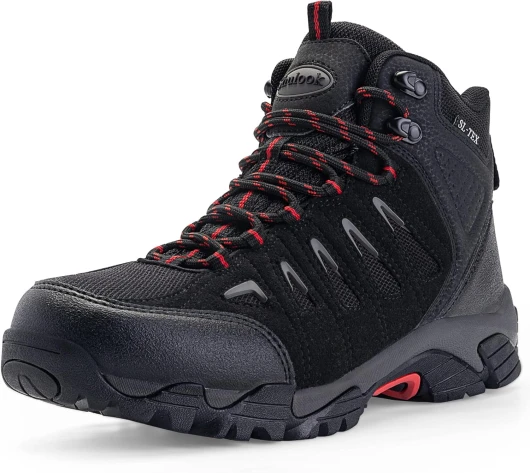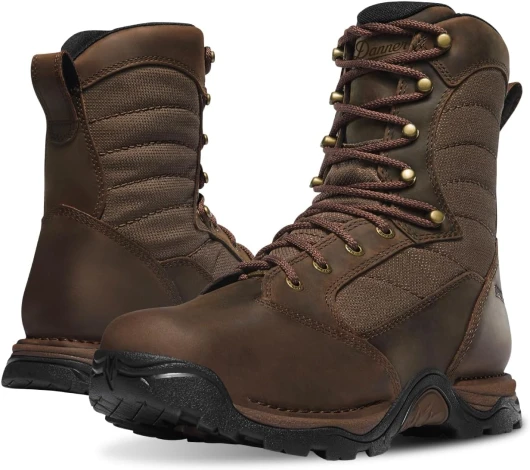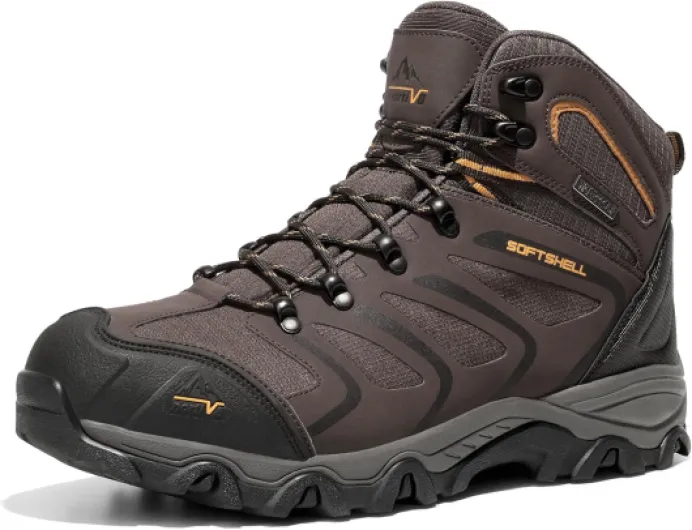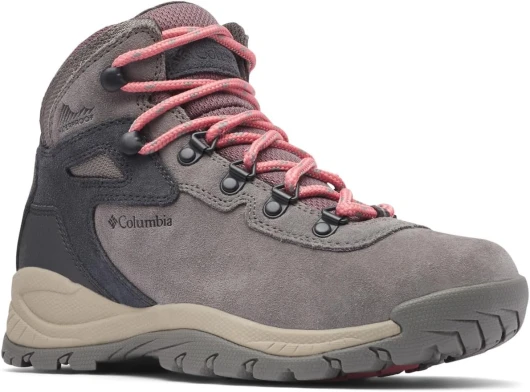
What is a Boot Shank?
The Backbone of Your Hiking Experience
Hiking boots are crucial to making any outdoor escapade both safe and comfortable, and one element that supports this is the boot shank. A "boot shank" might sound like technical jargon, but understanding it is vital for anyone serious about hiking. At its core, the shank is a supportive structure located between the insole and outsole of a boot. It often stretches from the midfoot to the heel and plays a critical role in stabilizing the foot. When it comes to work environments or rugged terrains, where a "steel shank" or "composite shank" might be necessary, the shank becomes even more integral to ensuring safe movement. In hiking boots, the shank can be made from materials like steel, composite, or even leather. Each material offers its own benefits. For instance, steel shanks provide excellent rigidity, making them ideal for challenging terrains. On the other hand, composite shanks tend to be lighter, offering more flexibility without compromising support. Whether you're exploring with waterproof leather boots, or seeking durable "work boots" with a "steel toe," understanding the function of the shank is key. It not only enhances the structural integrity of your gear but also contributes significantly to the overall comfort and safety of your hiking adventure. Learn more about how moc toe boots contribute to versatility in hiking for a deeper appreciation of your gear's design quirks.Types of Boot Shanks
Exploring the Variety of Shank Materials
Understanding the diversity in boot shank materials is crucial for deciding which hiking boots best suit your needs. When delving into the realm of hiking and work boots, several types of shanks are commonly encountered. Each material offers distinct characteristics that cater to various requirements, from providing support to maintaining flexibility.- Steel Shanks: These are perhaps the most traditional and frequently used in robust work boots. Steel shanks offer solid support, particularly for those who might need to bear heavy loads or work in rugged environments. While they contribute significantly to the boot's rigidity, they can add weight and may not be the best choice for those looking for lightweight footwear. Steel shanks are often found in brands like Timberland Pro and Georgia Boot.
- Composite Shanks: Composed of materials like Kevlar, carbon fiber, or plastic, composite shanks offer a lighter alternative to steel. They provide flexibility and are generally paired with boots that need to maintain a degree of agility. For those requiring a tough but less cumbersome solution, a composite shank can be ideal, especially in conditions demanding both strength and comfort.
- Leather Shanks: Although not as common today due to advances in material science, leather shanks have been employed traditionally. They offer a balance of support and natural flexibility, appealing to those who prefer more organic materials in their footwear. However, leather shanks require more maintenance to ensure longevity.
- Nylon and Fiberglass Shanks: These materials are often used in hiking boots seeking to minimize weight while offering sufficient support. They are perfect for long treks where comfort and reduced burden on the feet are paramount.
Benefits of a Proper Boot Shank
Advantages of an Optimal Boot Shank
When it comes to hiking boots, the shank's quality is often a critical factor determining both performance and comfort on the trail. The right boot shank significantly enhances various aspects of footwear utility, which is particularly vital on rugged terrains.
One of the key benefits of a well-designed shank is the support it offers. Regardless of whether your boots feature a metal, steel shank, or a composite shank, their presence provides the necessary stability to keep your feet secure over challenging landscapes. Shanks are essential in distributing the body weight evenly across the sole, thus minimizing foot fatigue.
Moreover, a proper shank contributes to the waterproof capabilities of hiking boots. It ensures that the boots maintain their shape and structure, an essential factor when encountering waterlogged trails.
In addition to providing stability and waterproofing benefits, shanks also play a role in safeguarding the feet. A steel shank, for instance, offers protection against sharp objects found on trails, working much like a steel toe in work boots, which often feature both elements for enhanced safety.
Whether opting for a plush leather or cost-effective composite option, making the right choice is pivotal. Prices vary depending on the shank material and design, with shanks in boots composite and leather shank variants typically offering a foot-friendly> experience without compromising on either durability or function.
Choosing the Right Boot Shank for Your Needs
Selecting the Ideal Boot Shank for Your Requirements
When faced with a vast array of options in hiking boots, understanding the boot shank in the context of personal needs becomes crucial. Different types of shanks—whether steel, leather, composite, or other materials—are suited for various hiking scenarios, from leisure trails to challenging terrains.
Assessing Your Activity Level: If mountaineering involves demanding trails and steep terrains, a steel shank boot provides essential support thanks to its robust construction. On the other hand, for lighter hikes, a composite shank might be preferable, offering a balance of support and flexibility.
Evaluating Comfort and Fit: For men who spend long periods on their feet, whether in work boots or hiking pairs, comfort cannot be overlooked. A soft toe boot with a composite shank may provide the comfort necessary without compromising on lightness and natural movement.
Considering Terrain and Conditions: When trails involve wet conditions, boots with a waterproof feature and a durable shank, like those integrated in designs from credible brands, ensure that feet remain dry and supported. Leather shanks, while traditional, can also offer flexibility and a snug fit.
Understanding Price and Value: While steel shank and safety toe boots can be on the pricey side due to their durability and protection, the investment often proves worthwhile with extended longevity. Timberland Pro, for instance, exemplifies high-quality build combined with reliability.
In selecting a boot shank, matching the right materials with your hiking needs enhances performance while ensuring comfort and protection. As factors like terrain, duration of activity, and personal preferences come into play, thoughtful consideration of these elements ensures a supportive choice for your adventures.
Impact of Boot Shank on Hiking Performance
Influence on Overall Hiking Efficiency and Stability
When it comes to enhancing your hiking performance, the boot shank plays a critical role in providing the stability and support required on diverse terrains. Whether you're navigating rocky trails or muddy paths, a well-selected shank can dramatically influence your overall hiking experience. It aids in the distribution of weight across the feet, reducing fatigue and allowing for longer trekking adventures.
The choice between shank materials such as steel, composite, or leather is crucial as it impacts the boot's rigidity and comfort. Steel shanks deliver maximum sturdiness and are ideal for challenging terrains and heavy backpacks, offering a firm structure similar to work boots with steel toes. On the other hand, composite shanks provide a flexible yet supportive alternative, which can be beneficial for moderate hikes on uneven surfaces.
Men's hiking boots often incorporate these robust materials, aligning with the demands of challenging environments. However, the right fit also depends on the specific support your foot size requires, often impacted by sole design and shank integration. A decision between soft toe and safety toe features also plays into this, contributing to overall foot safety and comfort.
Ultimately, a suitable boot shank not only enhances performance but also elevates the comfort level, ensuring your feet remain free from strain. To maximize this benefit, consider factors such as waterproof features, leather quality, and sole construction, all of which interplay with the shank to enhance hiking efficiency.
Investing in boots at a reputable store that aligns with your hiking needs will help you connect with appropriate footwear, whether your preference leans towards a Georgia boot, Timberland Pro, or any specific work boot optimized for your trekking adventures. Selecting the right pair can be pivotal in maintaining proper foot health and achieving an enjoyable hiking journey.
Care and Maintenance of Boot Shanks
Extending the Life of Your Boot Shank
Caring for your hiking boots is essential to ensure they withstand the rigors of your adventures. The boot shank plays a crucial role in providing stability and support, whether you're wearing a pair of work boots or trekking over rugged terrains. Here are some practical tips on maintaining both your boot shank and the entire boot:- Regular Cleaning: After each hiking adventure, make sure to clean your boots. Remove dirt and debris from the leather, sole, and the area around the shank. This prevents damage and ensures that waterproof materials maintain their efficacy.
- Dry Properly: Allow your boots to dry naturally after exposure to wet conditions. Avoid putting them near direct heat sources, as this can damage the leather and the integrity of your boot's shank, whether it's steel, composite, or leather.
- Check for Wear and Tear: Regularly inspect your boots for any signs of wear, especially around the shank area. Look for cracks or splits in the sole or any signs of the shank protruding.
- Use Quality Products: Invest in high-quality products for cleaning and conditioning leather boots. These products help preserve the material and indirectly support the longevity of the shank.
- Replace Insoles and Shanks if Needed: If you notice that the support from your boots has diminished, it might be time to replace insoles or the shank itself. Knowing the type of shank—be it a sturdy steel shank, a flexible composite shank, or a leather alternative—will guide you in choosing the right replacement.


















